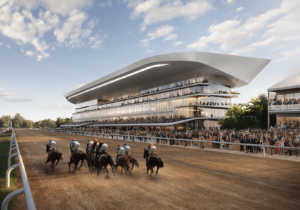On a hot day in June, a crowd gathered on 107th Street in Corona, Queens, to celebrate an event that was decades in the making: the opening of the Louis Armstrong Center, a 14,000-square-foot, $26 million new building designed by Caples Jefferson Architects. The structure is sited across the street from the Louis Armstrong House Museum, where the influential jazz trumpeter and his (fourth) wife, Lucille, lived from 1943 until his death in 1971.
The center exists for both preservation and performance purposes: It is the new home for Armstrong’s archive, which runs to 60,000 items, the world’s largest for any jazz musician, and includes a 75-seat performance venue. Beyond concerts, the space can host lectures, films, community events and educational experiences.
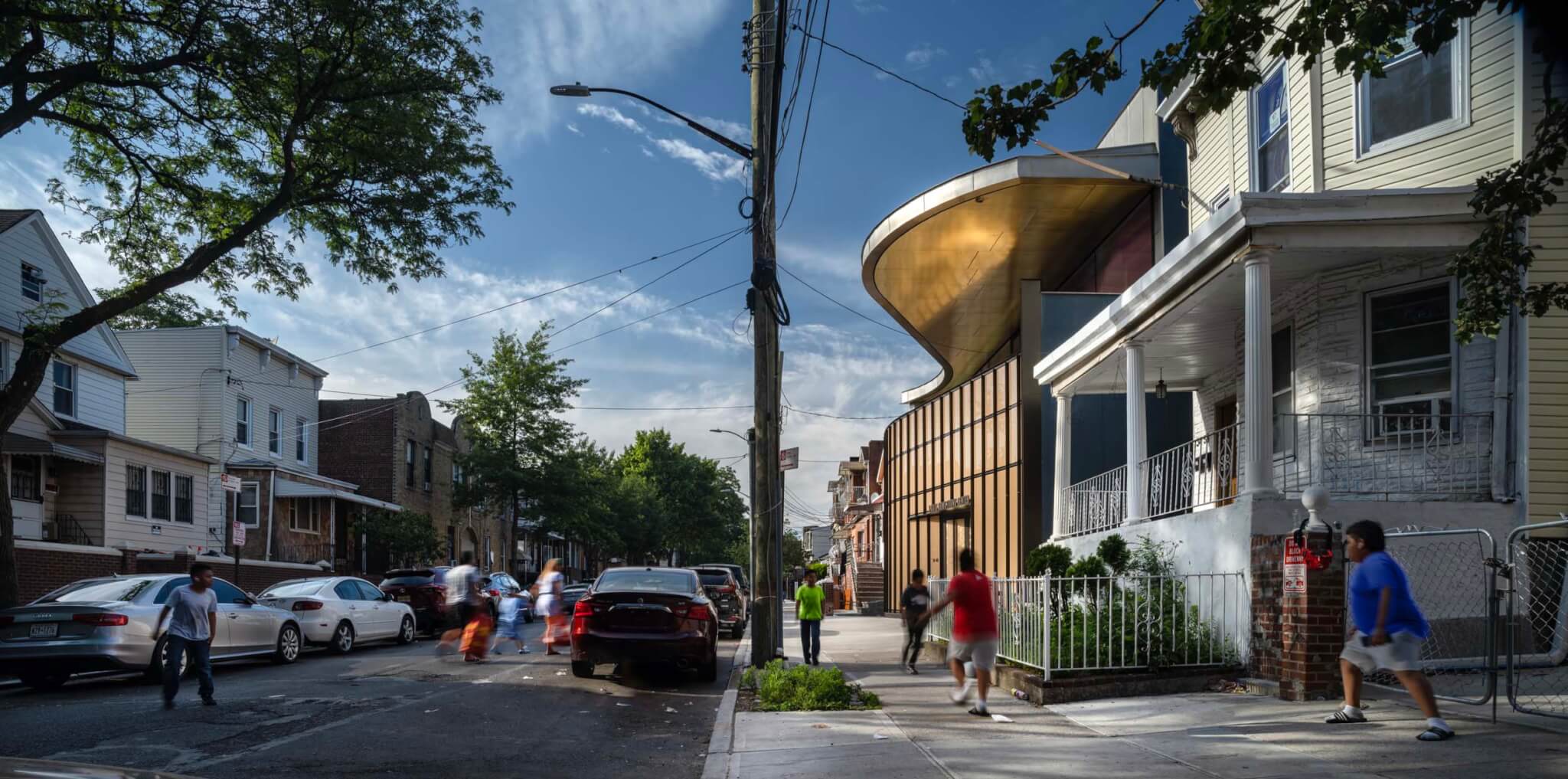
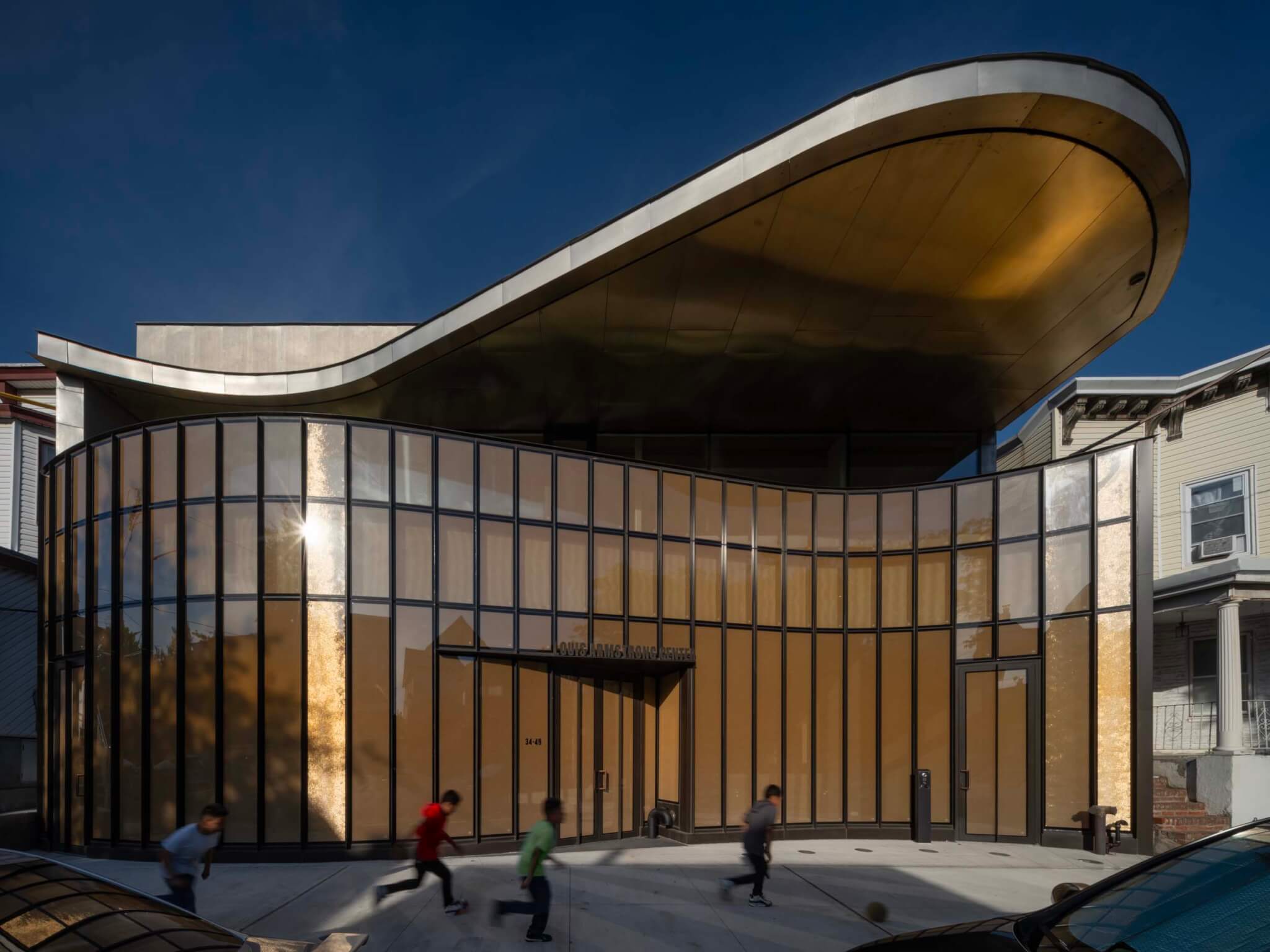
The center is a tribute to Armstrong’s art and the community of Queens, then and now. In contrast to nearby homes, clad in brick or vinyl siding, its facade is shaped by a curving curtain wall and overhead canopy, which are offset from each other in plan. Both reference the bell curves of Armstrong’s trumpet. The IGUs of the former are embedded with a wire mesh that also gives it a brassy, trumpetlike color. Vertical fins integrated into the storefront further accentuate the curvature formed from flat pieces of glazing. Caples Jefferson Architects designed the building’s front elevation in three horizontal bands to relate to the proportions of nearby homes. Concept renderings showed the building with an adjacent open lot, but as completed it slots tightly between its neighbors.
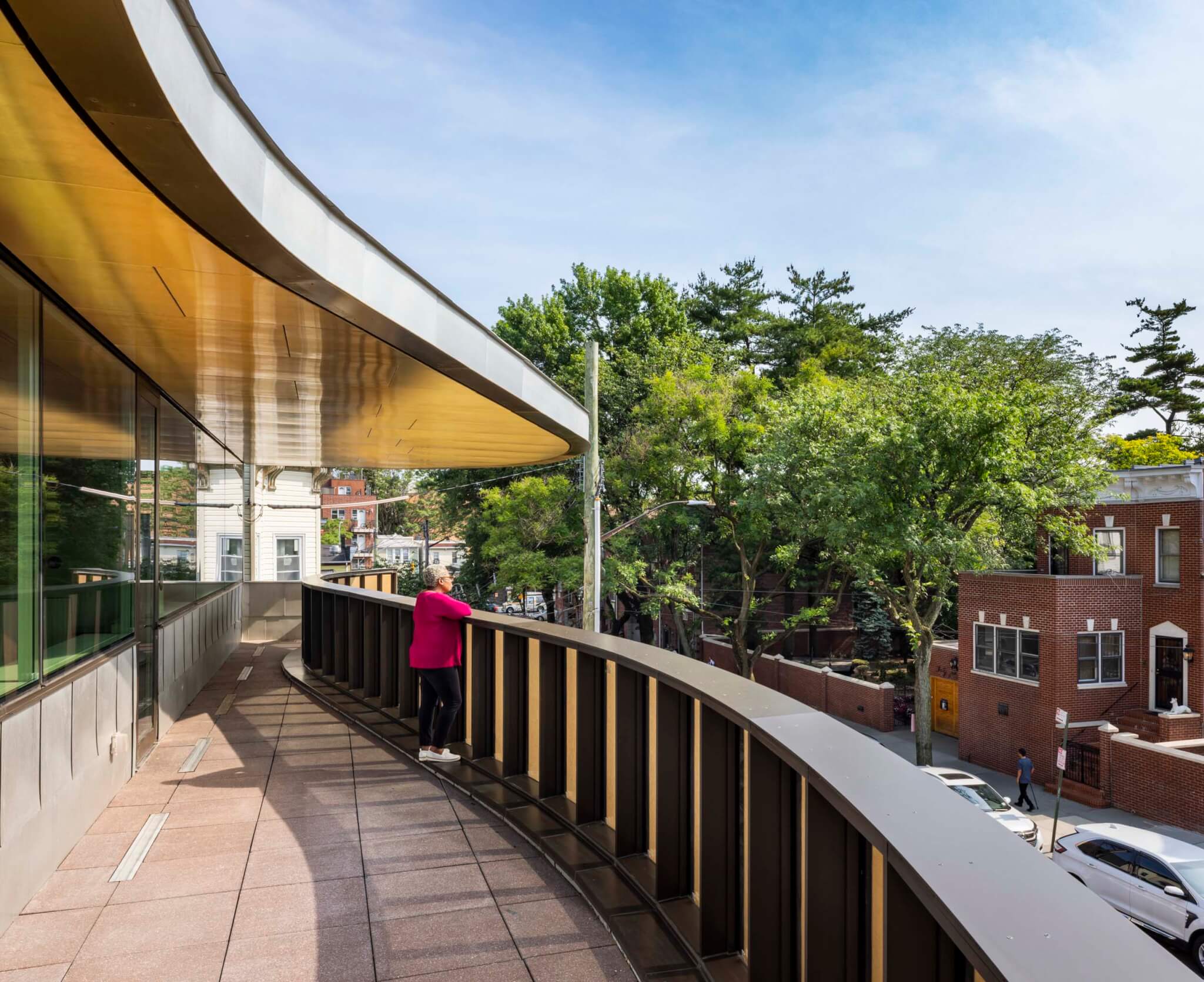
“In a neighborhood comprised of modest two-story houses, we wanted to keep the building in the scale of its surroundings, while creating an urban precinct that notes the singular work of the man whose music underlies so much of what we listen to today,” Sara Caples and Everardo Jefferson, of Caples Jefferson Architects, said. “The center simultaneously fits in and stands out—a paradox that reflects Armstrong’s life and work.” Since the firm’s founding in 1987, it has committed to designing at least 50 percent of its work in underserved communities. Many Voices: Architecture for Social Equity, a monograph about the work of the office, was published last year by RIBA Publishing.
Louis Armstrong changed the course of popular music through his trumpet playing and singing. After growing up in New Orleans and doing stints in Chicago, New York, and Los Angeles, he toured widely, including in Europe. His postwar influence shaped him into a representative of American modernity recognized around the world, leading to his nickname of Ambassador Satchmo, an update to his prior appellation Satchmo, a shortening of “satchel mouth.” Writing about him in Time, Stanley Crouch said that he was “one of the few who can easily be mentioned with Stravinsky, Picasso and Joyce” and that he “supplied revolutionary language that took on such pervasiveness that it became commonplace, like the light bulb, the airplane, the telephone.”
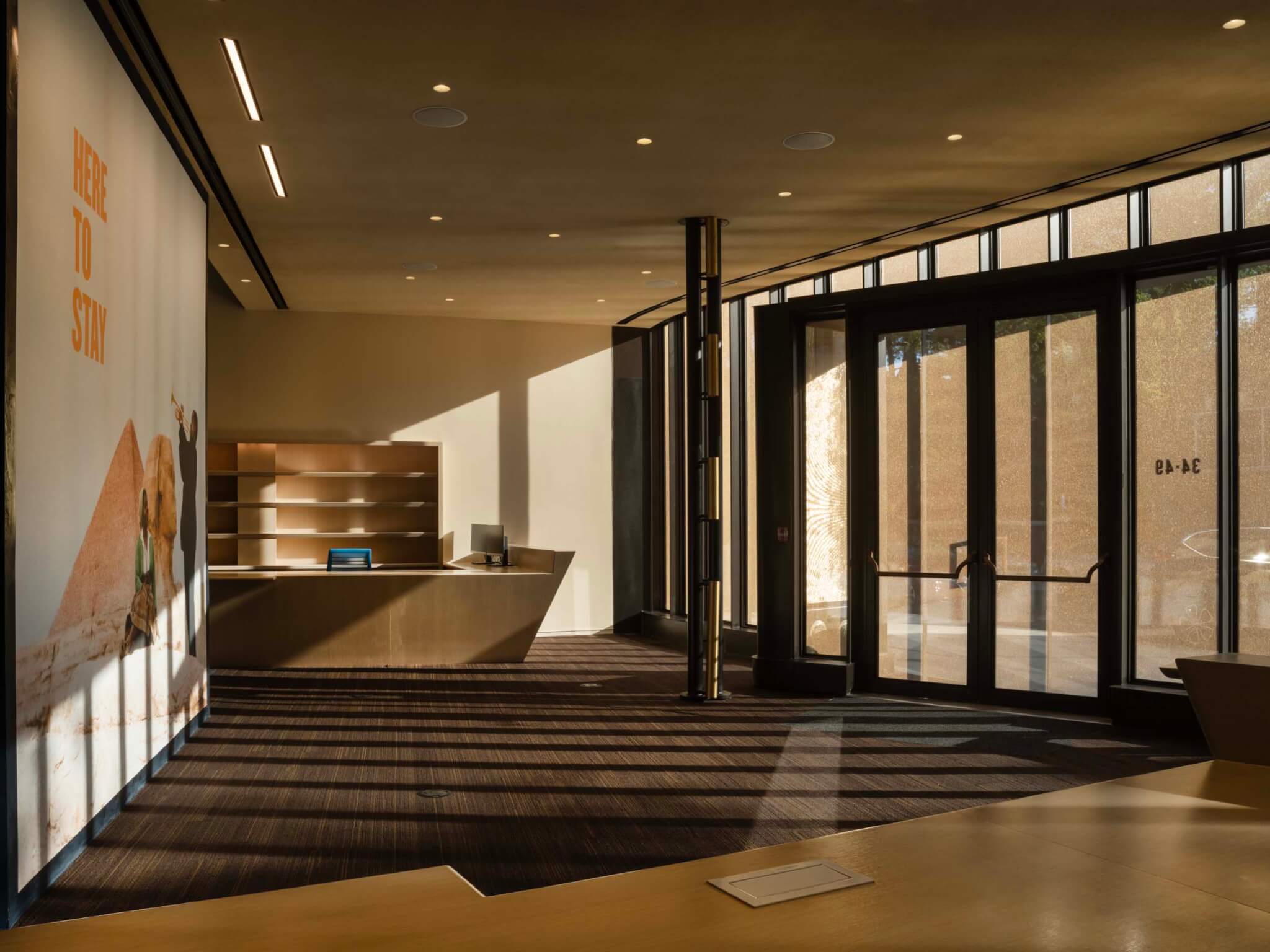
Thanks to Lucille, the Armstrongs’ home became notable for its bold interiors: There are sleek turquoise-lacquered cabinets; a mirrored bathroom; a wood-paneled, midcentury office; and a nearly all-white primary bedroom. The museum also maintains the adjacent garden next to the historic residence. The residence is a New York City Landmark and a U.S. National Historic Landmark in addition to being listed on the U.S. National Register of Historic Places.
Following Armstrong’s musical cues and Lucille’s decorative precedent, Caples and Jefferson delivered a center that uses the toolkit of modern architecture to illuminate and identify the various parts of the center’s interior.
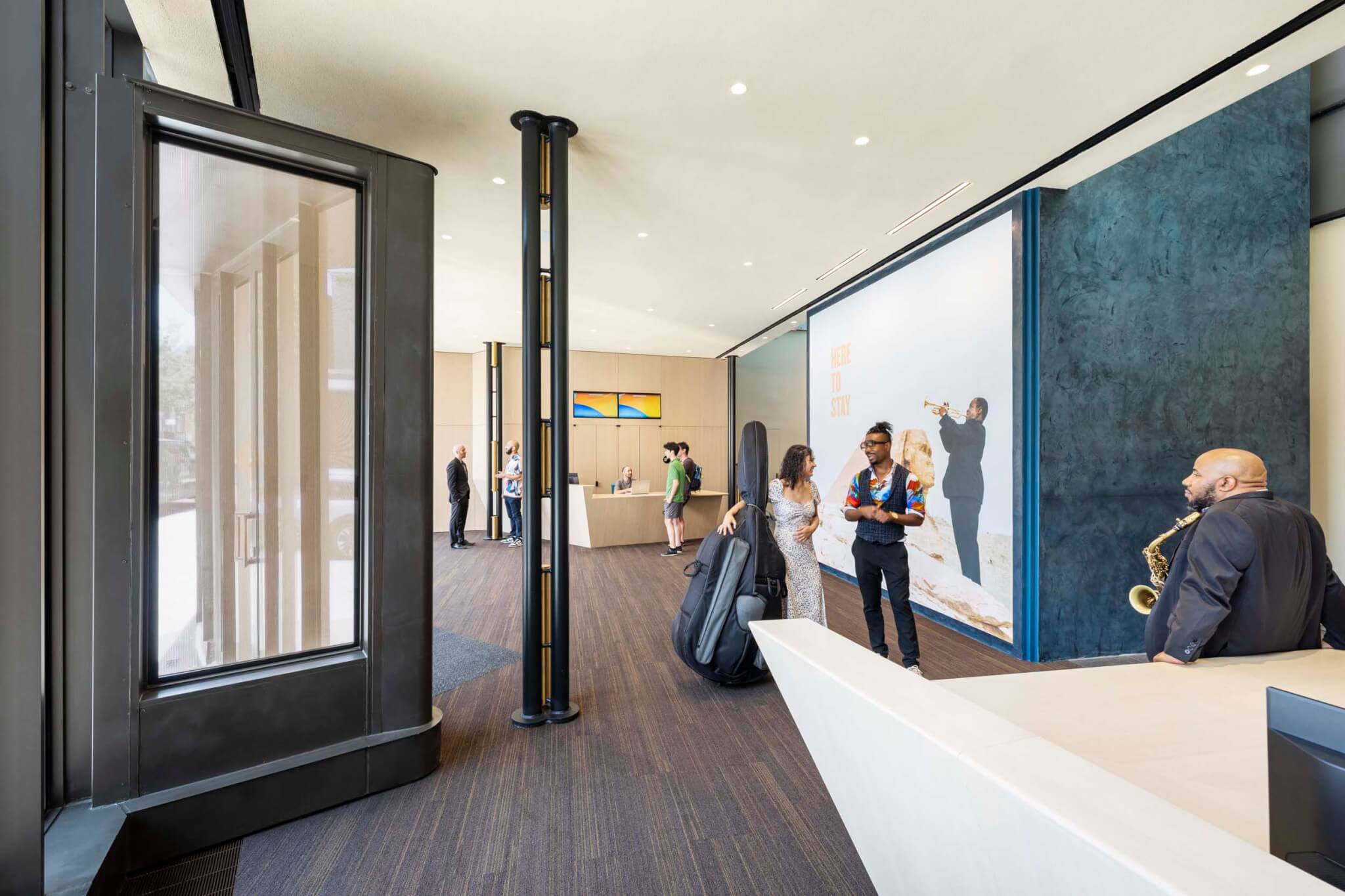
Once inside, a welcoming lobby is held up through doubled cylindrical metal columns decorated with golden tubes; the patterns of their lengths reference rhythms from Armstrong’s hit songs. Beyond, the space opens into a double-height volume pierced by an elevator core finished in blue plaster, which leads to Here to Stay, a permanent exhibit about Armstrong curated by pianist and artist Jason Moran which showcases artifacts from his life in circular frames and through an interactive central table.
Behind, doors open to the performance venue, which is finished in mahogany and red paint. Skylights can pour daylight into the room or be closed off, darkening it for dramatic purposes.
Upstairs, a secure facility houses Armstrong’s archive and auxiliary support spaces. Angled skylights on either side of the narrow complex illuminate its interior in different tones that correspond to solar norms: To the south, warm light bathes a gold-painted stair in gooey light, while to the north, bluish, clear light washes the space in a cool, even manner.
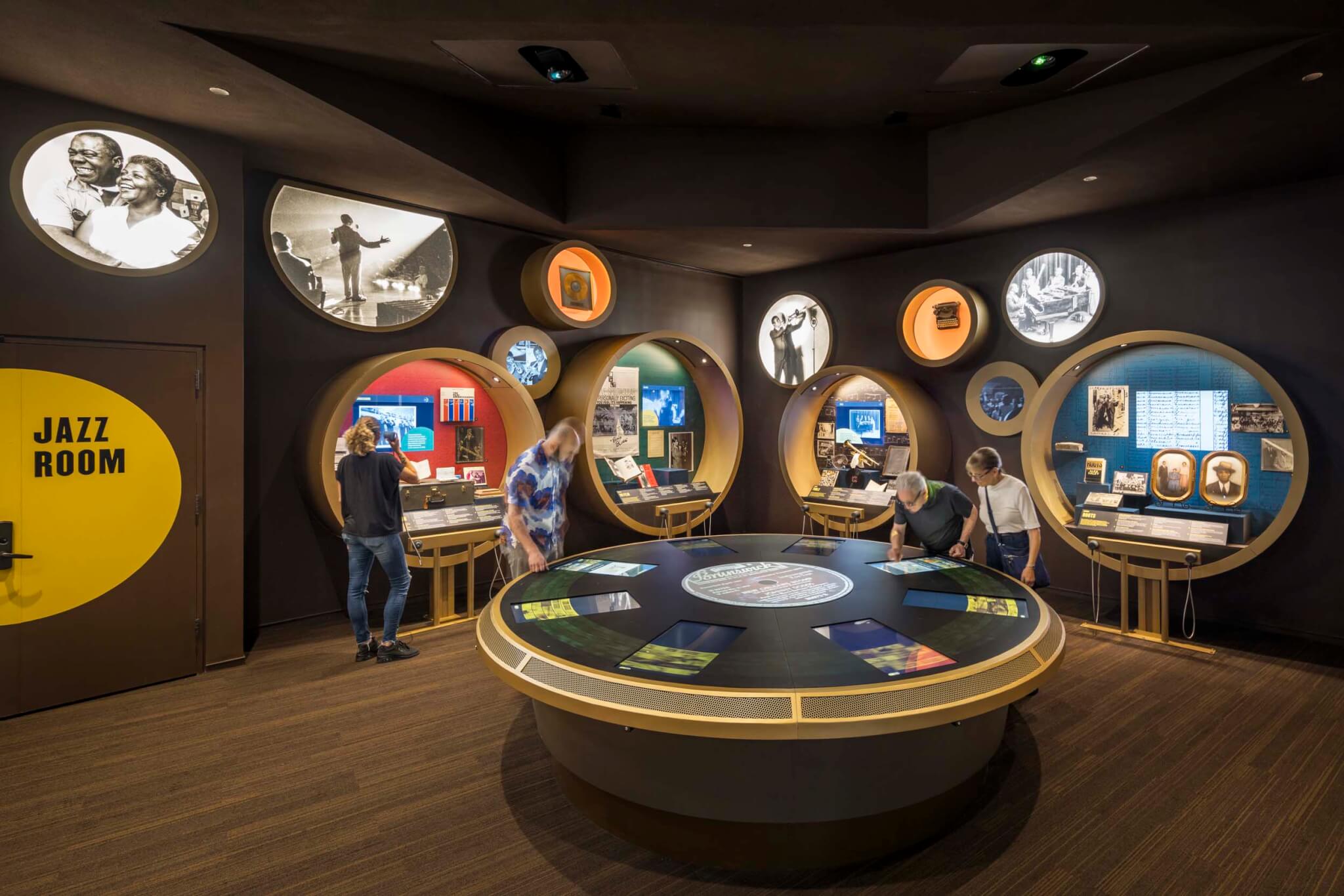
The second floor contains Armstrong’s archive and open-office space and is connected via glassed bridges as to allow ample light down to the ground floor. Tall windows furnish ample illumination out to the planted roof beyond, above the performance space below. Its surface angles up to meet its neighbor, offering a green patch as a visual reprieve for scholars at work within. The second floor also includes an outdoor balcony, which mirrors the Armstrongs’ home across the street.
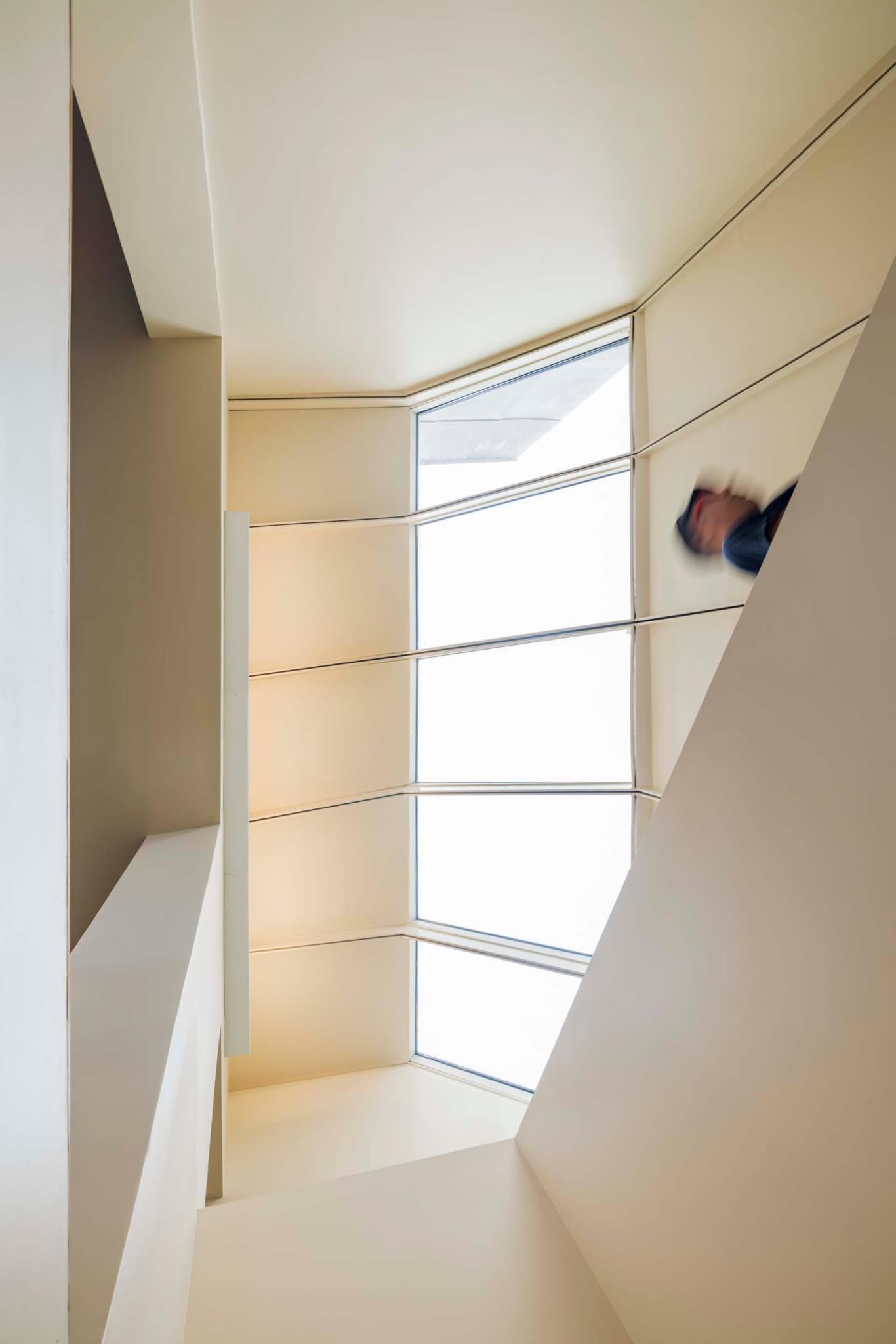
Caples and Jefferson have been waiting for well over a decade to see their work realized: They bested more than 40 entries in a competition to win the commission in 2007, and the project did not begin construction until 2018. In addition to Caples Jefferson Architects, the design team included Severud Associates, WSP, Arup, Steven Winter Associates, C&G Partners/Potion Design/Art Guild, Hill International, and Paul J. Scariano. The architects anticipate LEED Silver certification for the project.
“This is a landmark moment for the Louis Armstrong House Museum,” Regina Bain said, executive director of the 501(c)(3) non-profit, said. “Standing on the shoulders of the jazz and community greats who have come before us, the new Louis Armstrong Center invites today’s musicians, neighbors, and global fans to discover Louis and Lucille Armstrong’s story from a new perspective. We will bring the Armstrong’s unique archives alive through new interactive events. And we will ensure that music once again rings out on 107th Street through groundbreaking programs in collaboration with emerging artists and contemporary icons.”
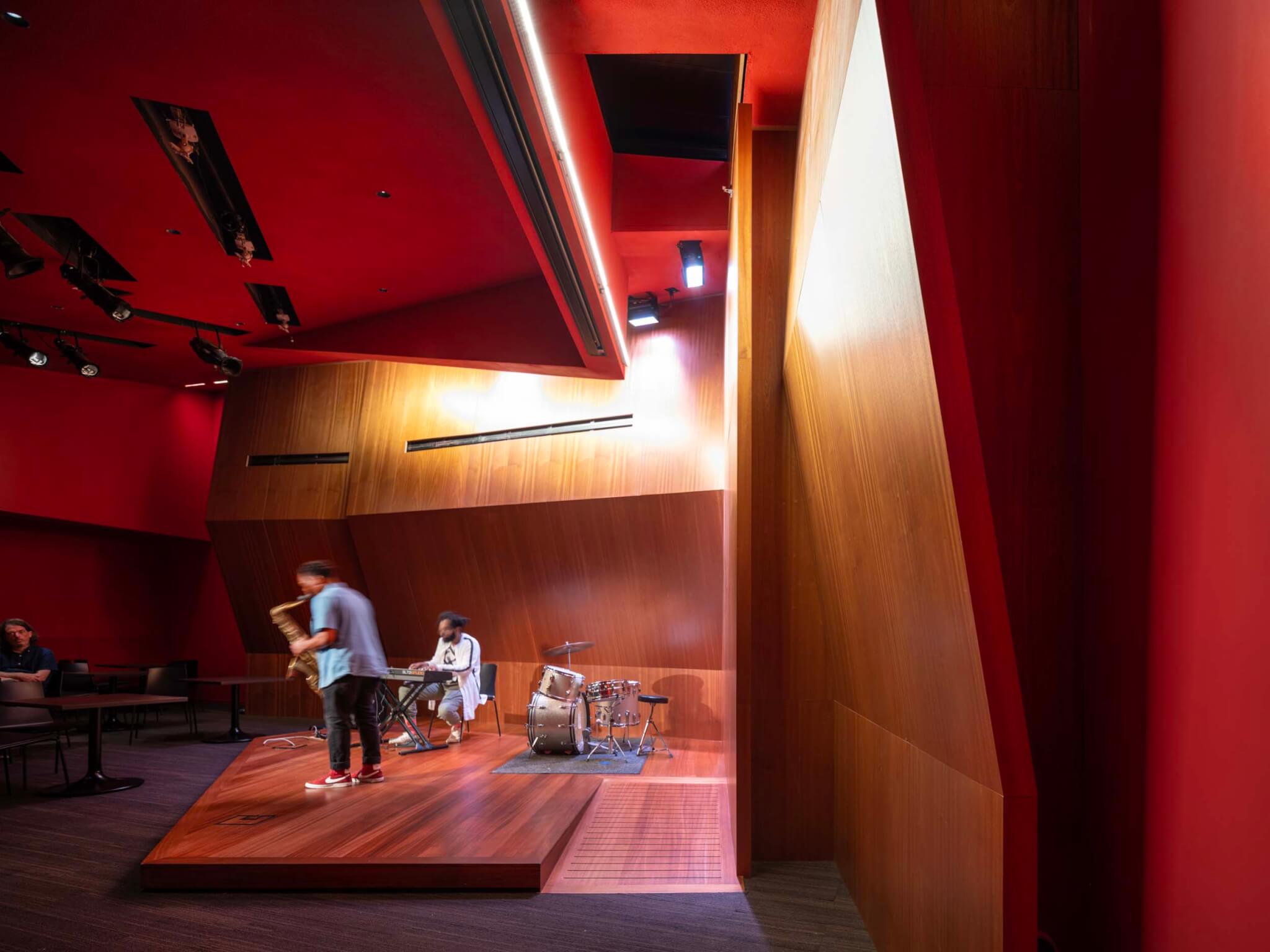
To mark the occasion in late June ahead of the official opening on July 6, elected officials and museum leaders past and present offered messages of encouragement. (The festivities were briefly interrupted when a man fleeing law enforcement ditched his vehicle and ran through the crowd, injuring New York State assemblyman for District 35 and Speaker Pro Tempore Jeffrion L. Aubry.) Later, Moran spoke and performed a brief piano solo. To close the opening ceremonies, a choir of trumpets appeared on the old and new balconies to fanfare the crowd with a rendition of “What a Wonderful World.” Afterward, tours and food were offered to celebrants. It was a great day in Queens.
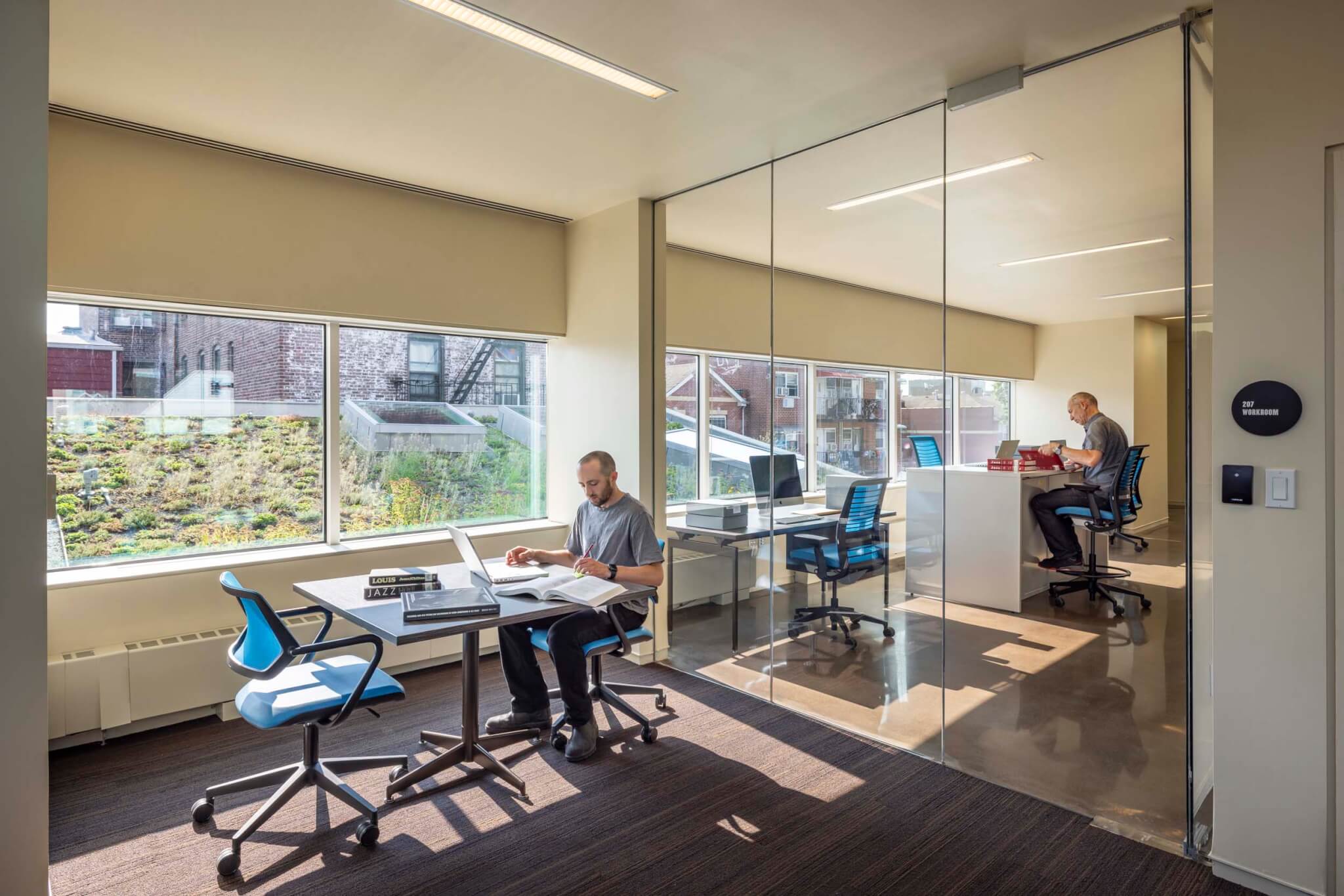
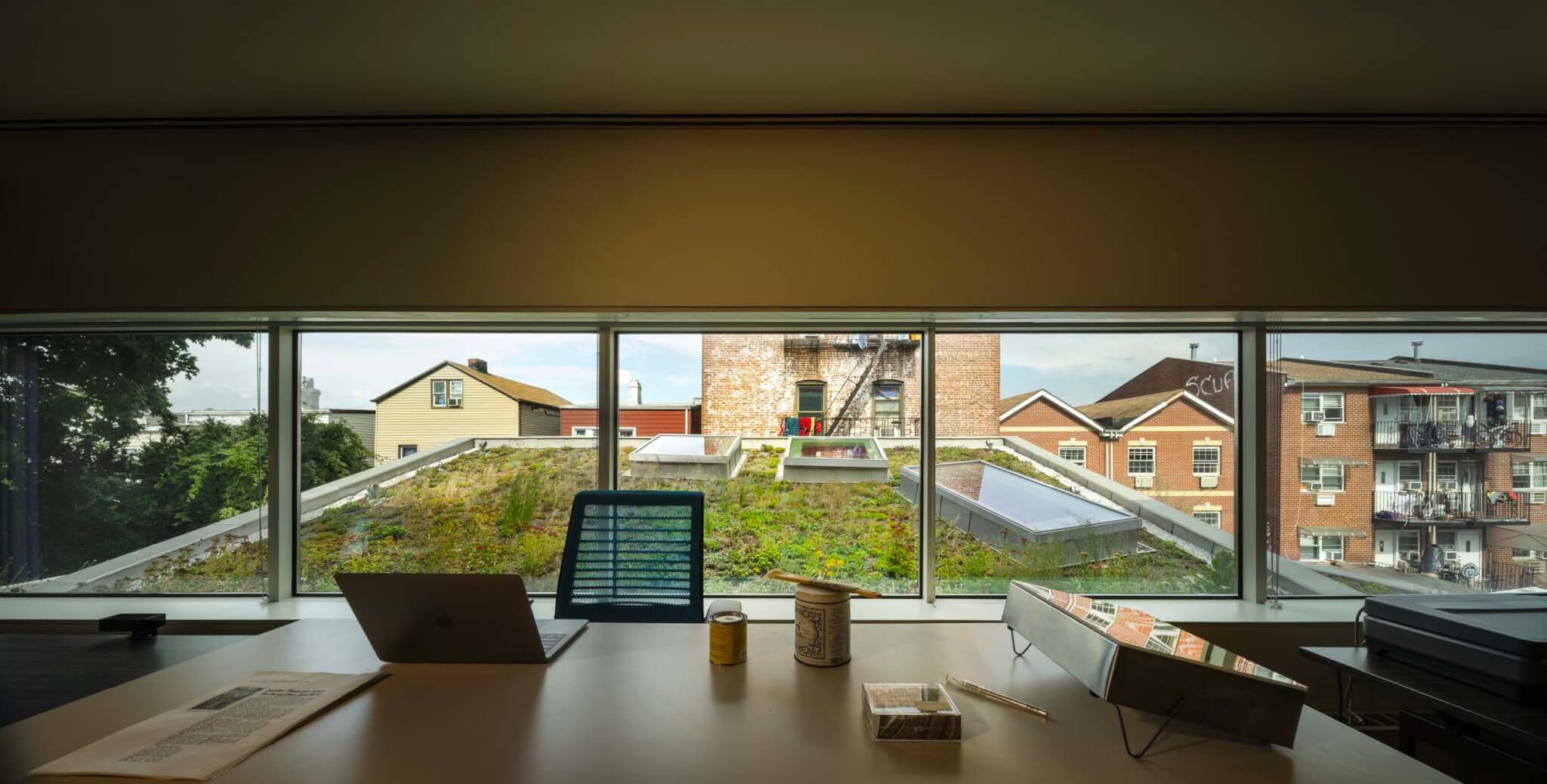
Armstrong’s music animated American popular culture. Beyond providing expanded facilities to share his story, this center offers a space for creativity to current and future generations. Jazz is all about expression; however old the tune, when the music begins, so does one’s chance to say something new. As Armstrong wrote, “What we play is life.”










